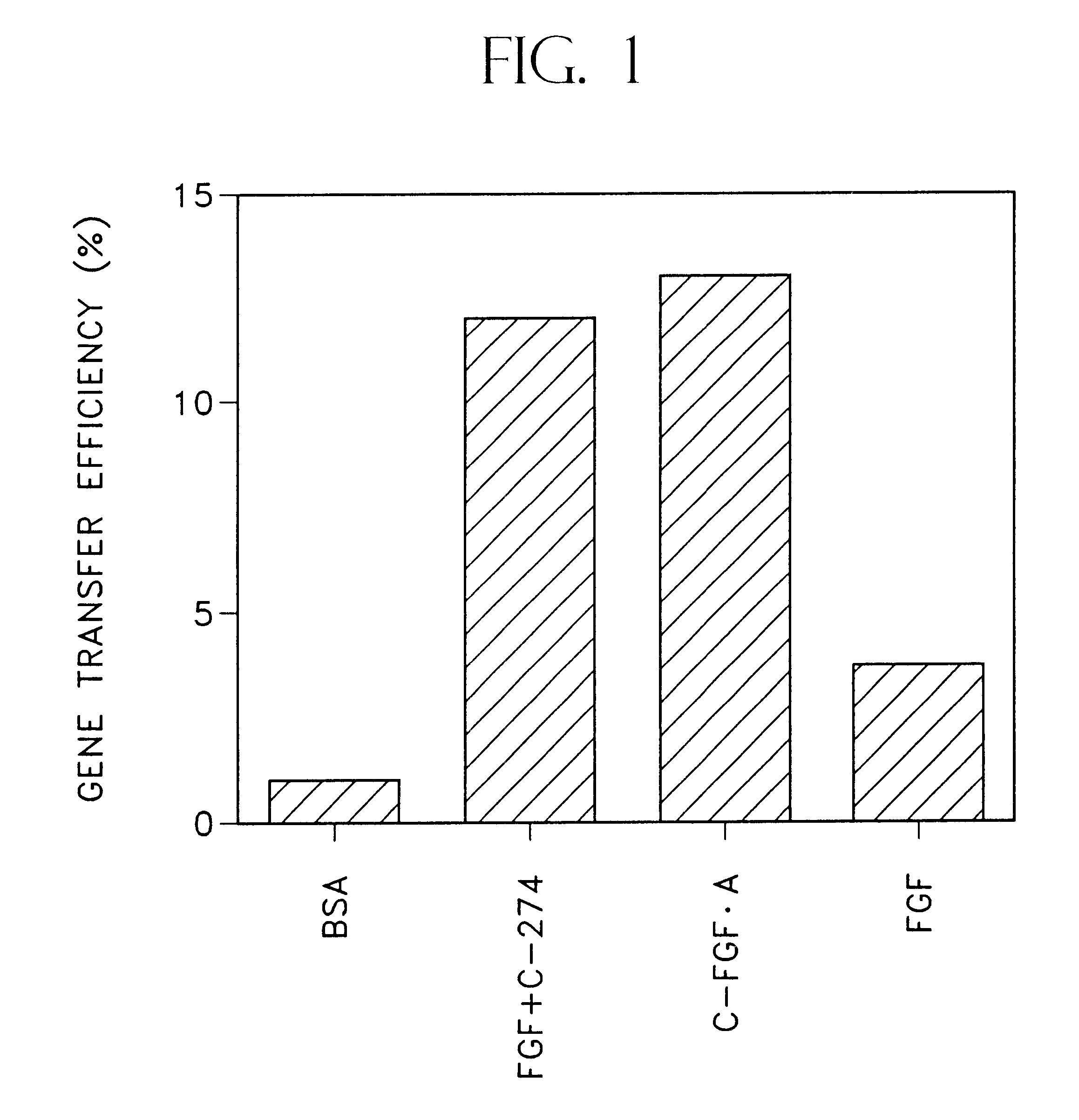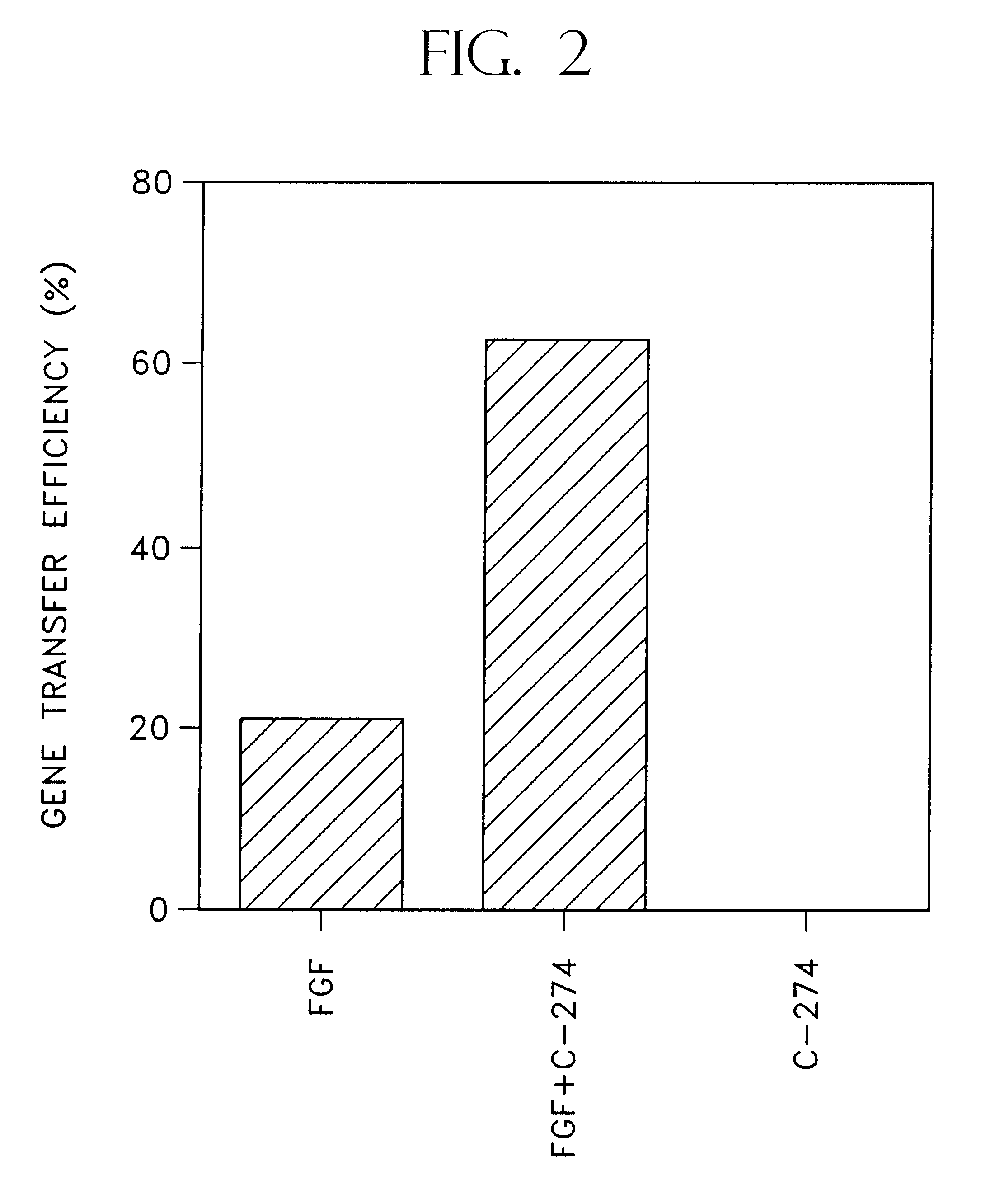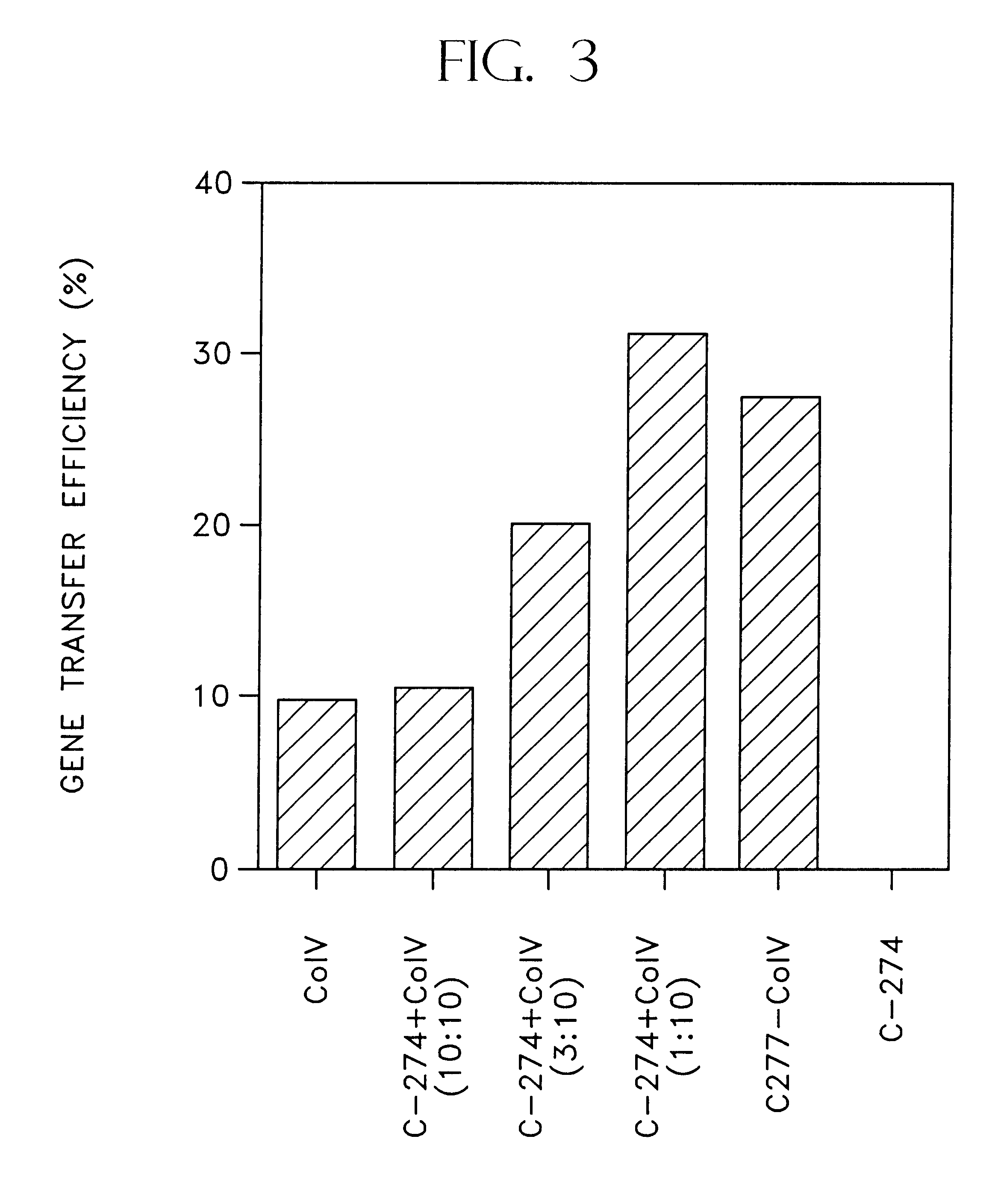Methods for retroviral mediated gene transfer employing molecules, or mixtures thereof, containing retroviral binding domains and target cell binding domains
a technology of retroviral binding domains and gene transfer methods, which is applied in the field of methods for retroviral binding domains employing molecules, can solve the problems of limited functional materials to be used in the above-described gene transfer method, and achieve the effect of efficient and convenient gene transfer and cell transfer
- Summary
- Abstract
- Description
- Claims
- Application Information
AI Technical Summary
Benefits of technology
Problems solved by technology
Method used
Image
Examples
example 2
(1) Preparation of Polypeptide Derived From Fibronectin
The polypeptide derived from human fibronectin, H-271 (amino acid sequence is shown in SEQ. ID No. 1 of the Sequence Listing) was prepared from E. coli containing the recombinant plasmid containing DNA encoding the polypeptide, pHD101, i.e., Escherichia coli HB101 / pHD101 (FERM BP-2264) according to the method disclosed in U.S. Pat. No. 5,198,423.
The polypeptide, CH-271 (amino acid sequence is shown in SEQ. ID No. 23 of the Sequence Listing) was prepared as follows. Namely, Escherichia coli HB101 / pCH101 (FERM BP-2799) was cultured according to the method described in the above patent and CH-271 was obtained from the culture.
And, the polypeptide, CH-296 (amino acid sequence is shown SEQ. ID No. 24) was prepared as follows. Namely, Escherichia coli HB101 / pCH102 (FERM BP-2800) was cultured according to the method described in the above patent and CH-296 was obtained from the culture.
The polypeptide, C-274 (amino acid sequence is sho...
example 3
(1) Gene transfer using mixture of functional materials
The following experiment was carried out to investigate the effect on the gene transfer in case of immobilization of a mixture of a cell binding material and a retrovirus binding material on a plate. First, each polypeptide was immobilized on a plate by using 32 pmol / cm.sup.2 (1.5 .mu.g / cm.sup.2) of C-FGF.cndot.A, a mixture 32 pmol / cm.sup.2 (1 .mu.g / cm.sup.2) of C-274 and 32 pmol / cm.sup.2 (0.5 .mu.g / cm.sup.2) of FGF or 32 pmol / cm.sup.2 (0.5 .mu.g / cm.sup.2) of FGF (Becton Dickinson) according to the same manner as described in Example 2 (9). After pre-incubating 2 ml of a virus supernatant containing 1,000 cfu of PM5neo virus in respective plates and a control plate coated with BSA at 37.degree. C. for 30 minutes, the plates were thoroughly washed with PBS. To each of these plates was added 2 ml of DMEM medium containing 2,000 NIH / 3T3 cells and incubated at 37.degree. C. for 2 hours in the absence of polybrene. Non adhered cells ...
example 4
(1) Gene transfer using FGF and C-FGF.cndot.A
The effect of FGF (Becton Deckinson) and the polypeptide represented by SEQ. ID No. 4 (C-FGF.cndot.A) on retrovirus infection was investigated by NIH / 3T3 cell colony forming assay. Namely, assessment was carried out according to the same manner as described in Example 2 (9) by immobilizing FGF (132 pmol / cm.sup.2, 2.25 .mu.g / cm.sup.2) and C-FGF.cndot.A (133 pmol / cm.sup.2, 6.3 .mu.g / cm.sup.2) on plates, respectively, and immobilizing BSA on a control plate. To each plate was added 2 ml of a virus supernatant containing 1,000 cfu of PM5neo virus and pre-incubated at 37.degree. C. for 30 minutes, followed by thoroughly washing with PBS. To this plate was added 2 ml of DMEM medium containing 2,000 NIH / 3T3 cells and incubated at 37.degree. C. for 24 hours, followed by incubation in a selection medium containing 0.75 mg / ml of G418 for 10 days. Colonies were stained and counted. The results are shown in FIG. 9. In FIG. 9, the abscissa indicates t...
PUM
| Property | Measurement | Unit |
|---|---|---|
| pH | aaaaa | aaaaa |
| temperatures | aaaaa | aaaaa |
| temperatures | aaaaa | aaaaa |
Abstract
Description
Claims
Application Information
 Login to View More
Login to View More - R&D
- Intellectual Property
- Life Sciences
- Materials
- Tech Scout
- Unparalleled Data Quality
- Higher Quality Content
- 60% Fewer Hallucinations
Browse by: Latest US Patents, China's latest patents, Technical Efficacy Thesaurus, Application Domain, Technology Topic, Popular Technical Reports.
© 2025 PatSnap. All rights reserved.Legal|Privacy policy|Modern Slavery Act Transparency Statement|Sitemap|About US| Contact US: help@patsnap.com



